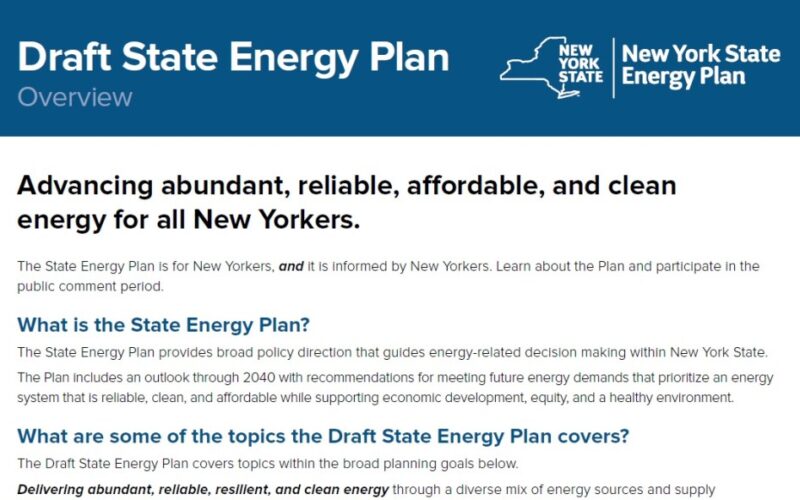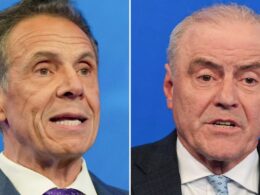New York’s new State Energy Plan is heading in the wrong direction, but it is not too late to course correct. Gov. Hochul and the Energy Planning Board must fully incorporate the mandates of the landmark 2019 Climate Leadership and Community Protection Act (CLCPA) and its subsequent Scoping Plan into the State Energy Plan to protect New Yorkers from the rising economic and human costs of fossil fuels in our energy system.
New York’s last State Energy Plan was adopted in 2015 as a comprehensive roadmap to build a clean, resilient, and affordable energy system for all New Yorkers. This 15-year outlook is the broadest program and policy guide for energy-related decision-making in the public and private sectors across the state, from home heating to street lights to vehicle electrification. Although it was supposed to be updated every four years, it was only amended once in 2020.
The 2025 State Energy Plan is the first opportunity for the state to fully integrate the mandates of CLCPA to achieve a zero-emissions electricity grid and significantly reduce emissions in the buildings and transportation sectors. Since CLCPA’s passage in 2019, the state has already published a Scoping Plan in late 2022 with clear recommendations and actions to achieve true emissions reductions that will create thousands of good, green jobs for decades to come.
The law requires these recommendations be incorporated into the State Energy Plan — it does not give the Energy Planning Board the option to cherry pick the policies that are convenient.
Unfortunately, New York State leadership is going in the wrong direction in the recently released draft State Energy Plan. The State Energy Planning Board’s most recent pathways analysis suggests an “all of the above” approach to designing the future of our energy system. This includes building new, large nuclear power plants, relying on hydrogen, natural gas and other combustible polluting fuels, and even repowering old fossil fuel power plants, ostensibly targeted at the unchecked expansion of AI operations and data centers.
On top of the state’s ongoing efforts to delay regulations for implementing the CLCPA — most notably the adoption of a Cap and Invest program that would raise billions of dollars for energy affordability in the form of utility bill credits for New York households, and funding for climate infrastructure and workforce development — it is no wonder that advocates are questioning whether the governor’s commitment to the clean energy transition is genuine.
It is not too late for New York State to set things right with the 2025 Energy Plan. In the few months left in this process, the New York State Energy Research and Development Authority and the rest of the Energy Planning Board must fully incorporate the Scoping Plan into the State Energy Plan.
They must take actions such as doubling down on incentivizing renewable energy and battery storage development, accelerating home electrification and energy efficiency upgrades, regulating transportation pollution, purchasing thousands of clean electric school buses, and advancing relevant programs and regulations at all levels of state and municipal government. And yes, finally moving forward on Cap and Invest.
These are investments and innovations that have a proven track record of success in our state and across many parts of the country, in contrast to expensive and unproven solutions like nuclear and hydrogen, and prolonged reliance on fossil fuels.
At a time when the federal government is backtracking on the clean energy transition, New York must step up its role and leadership in this process rather than conforming to the dangerous narratives and attacks coming out of Washington. It is not too late for the state to get on the right path with the State Energy Plan, but the time to make changes is now.
Ko is the deputy director at the NYC Environmental Justice Alliance where she works on climate and environmental justice advocacy, policy, and organizing in New York State and New York City.








